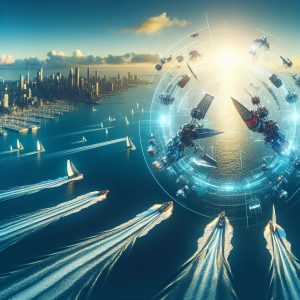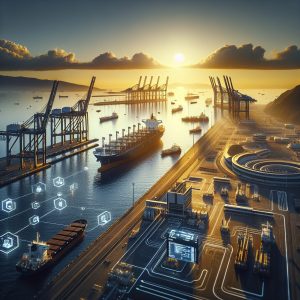The Revolution of Autonomous Underwater Surveillance: Gulfport Port Adopts Cutting-Edge Technology
The Gulfport Port has announced the implementation of a continuous autonomous underwater surveillance system that promises to revolutionize port security and operations. This development is being carried out in collaboration with Ocean Aero, a leading company in underwater technology, which has introduced its innovative Triton AUSV (Autonomous Underwater Surface Vehicle). This breakthrough not only signifies a technological milestone but also opens up new opportunities for professionals in the sector. The integration of this autonomous technology reflects current trends towards automation and the use of artificial intelligence in nautical operations.
The Triton AUSV provides continuous surveillance without human intervention, optimizing operational efficiency and reducing risks associated with direct human intervention in underwater environments. Additionally, this system has the ability to proactively detect anomalies and potential threats, representing a qualitative leap in maritime security. For the Gulfport Port, this innovation represents a significant enhancement in its surveillance capabilities, thus attracting more investors interested in the security and efficiency of port operations.
Cutting-Edge Technology: The Triton AUSV
- The Triton AUSV, developed by Ocean Aero, is an autonomous vehicle designed to navigate both on the surface and underwater, allowing it to adapt to different maritime conditions. This versatility is crucial for continuous surveillance tasks, enabling coverage of extensive port areas without the need for onshore support.
- One of the most outstanding features of the Triton is its ability to operate independently for long periods, resulting in uninterrupted surveillance of port infrastructures. Equipped with advanced sensors and communication technologies, the Triton can send real-time data, facilitating a rapid response to any incidents.
- This autonomous vehicle uses artificial intelligence algorithms to identify and classify unusual objects and situations. This not only improves surveillance accuracy but also reduces the workload of human personnel, allowing them to focus on tasks requiring higher strategic analysis.
For maritime industry professionals, the implementation of this technology opens up a range of new job opportunities and professional development. Experts in autonomous systems, maritime engineers, and data analysts will find in this innovation a fertile field to apply and develop their skills. Moreover, companies wishing to collaborate with ports that have already integrated these technologies could benefit from increased visibility and reputation in the sector.
Implications for Industry Professionals
The demand for specialists capable of interpreting and managing data generated by systems like the Triton AUSV is increasing, a factor that should motivate professionals to acquire skills in these areas. On the other hand, the introduction of these systems fosters the interest of investors in the maritime sector, by ensuring safer and more efficient port operations. The Gulfport Port could become an example of how technology can optimize security and attract capital interested in innovative projects.
Relevance and Utility of the Triton AUSV
The announcement of the implementation of the Triton AUSV in the Gulfport Port is relevant to several segments of the WishToSail.com audience:
- For sailors and port operators, this technology represents a crucial tool that significantly improves operational safety, reduces the risk of accidents, and enhances efficiency.
- Maritime investors will also find this innovation very interesting since a port equipped with advanced technology is more appealing for safe and efficient commercial activities.
- Additionally, the ability of autonomous systems to operate continuously offers a level of predictability in port operations that is highly valued in terms of investment.
Future Opportunities and Conclusions
The implementation of autonomous underwater surveillance at the Gulfport Port not only reflects a trend towards automation in the maritime industry but also sets a precedent for other ports looking to modernize their operations. This move not only increases the efficiency and security of the port but also offers opportunities for the development of new technical skills among industry professionals. Furthermore, with the growing demand for effective technological solutions in the maritime domain, such innovations play a key role in the transformation and digitization of the industry.
Both sailors and investors are called to explore how these new technologies can be applied in their respective fields, thus creating a safer and more efficient maritime ecosystem. We invite all those interested in this fascinating maritime world to continue exploring these technological trends and consider how advanced systems like the Triton AUSV can be integrated into their own operations. The future of navigation and port operations promises to be increasingly autonomous and exciting.






